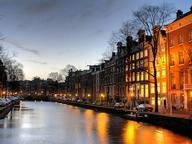Quiz Answer Key and Fun Facts
1. Around 50 B.C. a Batavian settlement arose near the Waal river, on a hill that is in the centre of modern Nijmegen. The hill is called the Valkhof. What was the settlement called?
2. At about the same period Roman soldiers built a fort near the Batavian settlement to defend the border and for use as a base for their expeditions. The Batavians accepted Roman rule and for quite some time both Romans and Batavians lived alongside each other in relative peace. Things changed with the Batavian Revolt. When did this rebellion start?
3. After the Batavian Revolt, the settlement was burnt down by the Batavians themselves. To keep an eye on the Batavians a Roman legion was stationed permanently near the former Batavian settlement. This attracted many people and created a lot of business activity. A new town came into existence west of the Roman fort: Ulpia Noviomagus Batavorum. This name was derived from the name of the Roman emperor who granted this town its market rights.
4. After years and years of violent attacks by Germanic tribes the Roman soldiers abandoned Noviomagus around 270 A.D. They returned during the 4th century, but in 402 A.D. they were called back to Rome, never to return.
Not much is known about the centuries that followed, until in 777 - Nijmegen was called Numaga at this point in time - a Frankish king built a castle at the Valkhof hill. What is the name of this future emperor?
5. In 880 the Valkhof castle was conquered by plundering members of an invading tribe. Who were they?
6. In 1230 Nijmegen, then called Nieumeghen, was awarded municipal rights. Since this includes the right to build town walls, towards the end of the 13th century earthen ramparts were built around the town, followed almost a century later by another wall, this time made of stone. The heart of the town at this time was situated around a church, consecrated in 1273. What is the name of this church?
7. The middle ages and the early modern period were turbulent for Nijmegen. The city was occupied by the Spaniards and later by the French. The plague hit the city in 1635-1636 and over 6,000 people (i.e. more than half of the population) died. In 1678-1679 Nijmegen gave its name to the Peace of Nijmegen. With which of the following countries did the Dutch United Provinces make peace?
8. In the 17th and 18th century Nijmegen was regarded very important in the defense of the Netherlands and therefore the city was fortified. Since it was forbidden to build houses outside of the city walls (assuring a clear shot from the towers and walls), the fortification stood in the way of a much needed expansion. Only in 1874 did the government grant permission to pull down the city walls, which was done with much enthusiasm over the next few years. In 1879 Nijmegen was finally connected to the Dutch railway network. Is it true that an international railway connection already existed there at that time?
9. Over the years Nijmegen kept growing and growing and in 1923 its university was founded. During the Second World War the city was bombed by the Allied Forces, because it was allegedly mistaken for a German town. Almost 900 people were killed and the inner-city was totally destroyed. The results of this bombing can still be seen in a square in the centre of Nijmegen. What is the name of this square?
10. In the late 1990s Nijmegen decided to expand across the Waal river, to meet with the ever increasing housing demand. The new district is called the Waalsprong (lit. "Waal jump") and will arise during the first two decades of the 21st century. To make accessing the city centre easier on March 20, 2004 a special third bridge was put in place across the Waal river. From then on which of the following means of transportation does NOT have its own bridge?
Source: Author
Leau
This quiz was reviewed by FunTrivia editor
bloomsby before going online.
Any errors found in FunTrivia content are routinely corrected through our feedback system.
